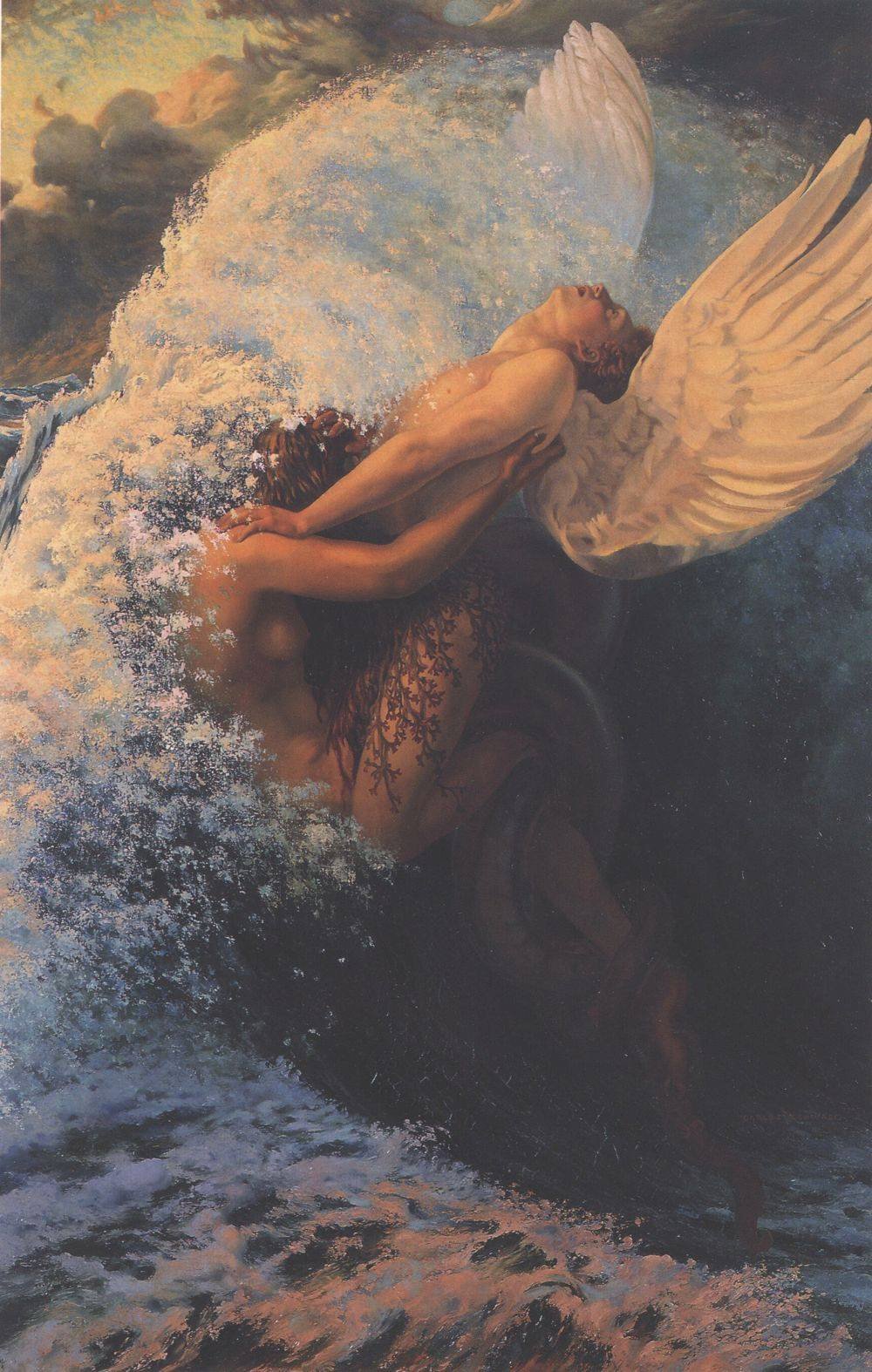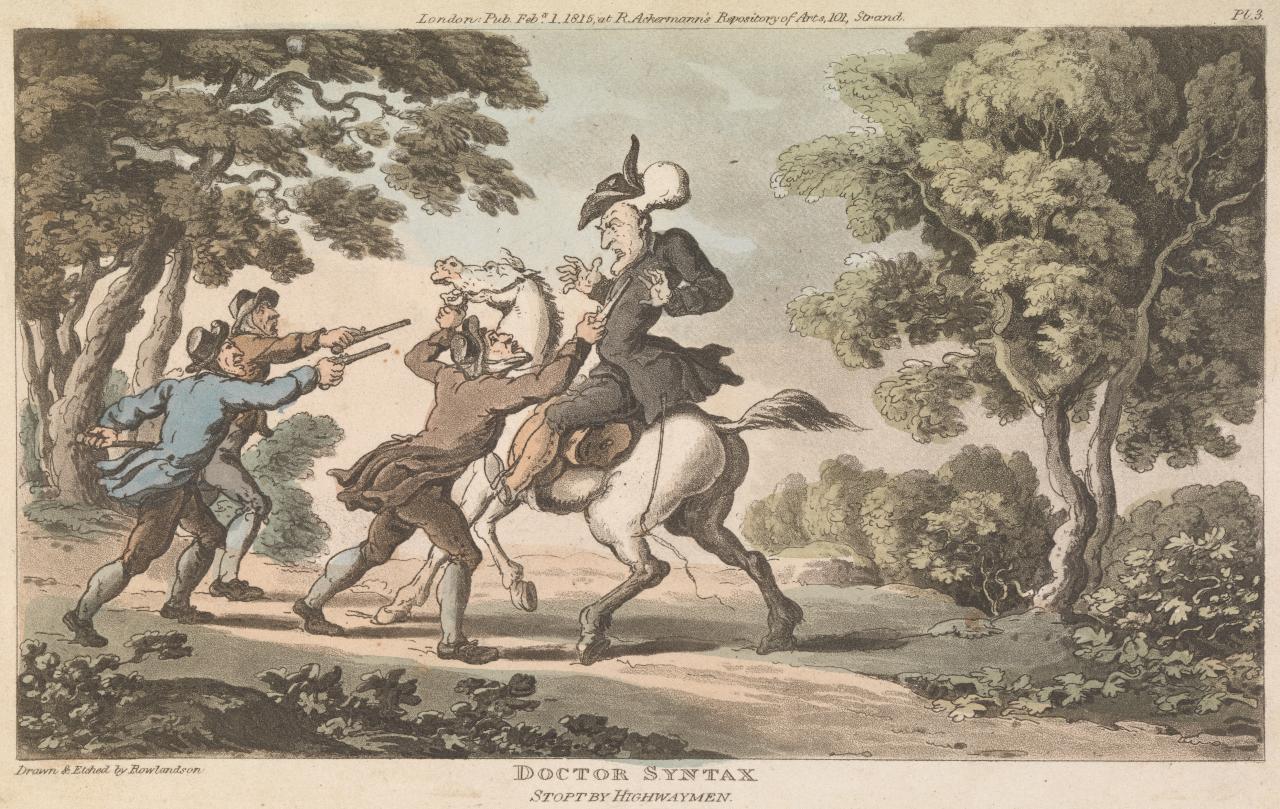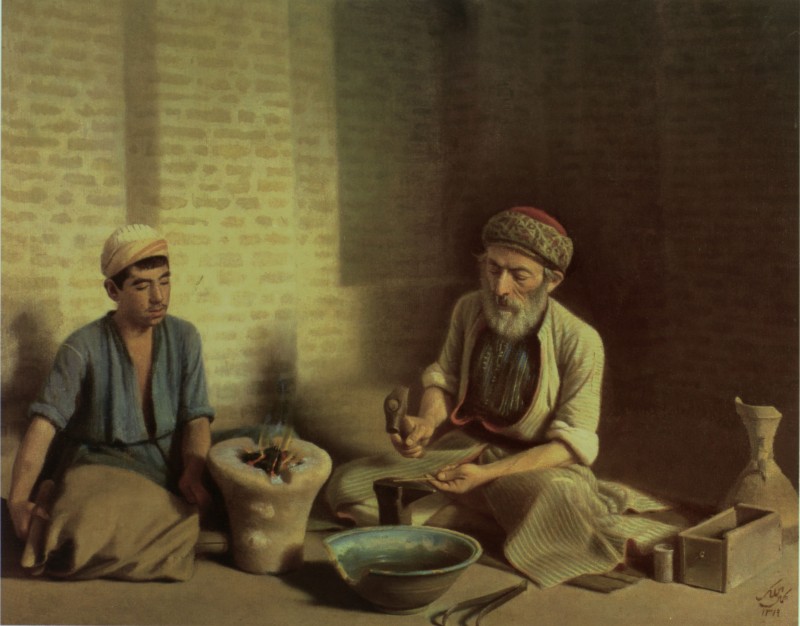|
Guillot De Paris
Guillot or Guiot of Paris was a late 13th or early 14th century French poet, author of the '' Le Dit des rues de Paris'' (dated to 1280–1300). Life All that we know of his life comes from biographical details in the ''Dit'' and its context. A man of letters, possibly a scribe, he was not a high-ranking poet. At the start of ''Dit'' he states he had edited several other texts: ''"Maint dit a fait de Roys, de Conte, Guillot de Paris en son conte"'' (lines 3 and 4). He demonstrates a poetic touch in his concise and color-filled descriptions of the streets of Paris. He lived in the reign of King Philip III of France (1245-1285), a time when the population of Paris was growing fast, requiring construction of a succession of enclosing walls ringing the city. In 1300 the population of Paris might have been 200 000 including the '' faubourgs'', Gérard has estimated. ''Dit'' A minor work of great importance for its portrayal of the Paris of the period, ''Dit'' was first published in ... [...More Info...] [...Related Items...] OR: [Wikipedia] [Google] [Baidu] |
Le Dit Des Rues De Paris
''Le Dit des rues de Paris'' is a 554-verse poem in octosyllabic rhyming couplets, written by Guillot of Paris and describing the streets of Paris between around 1280 and 1300. It deals with 310 streets, organised into the city's three main districts at that time: *to the north on the Rive Droite, the Outre-Grand-Pont district, also known as "la Ville" ("the city") *to the south on the Rive Gauche, the Outre-Petit-Pont district, also known as "l'Université" ("the University") *on the island, the Cité district, cradle of Paris It does not include cul de sacs, which its author calls ''rues sans chief''. References Bibliography * Guillot of Paris : ''Le Dit des rues de Paris'' avec préface, notes et glossaire par Edgar Mareuse. * Étienne Barbazan, Crapelet, Méon, Joly de Fleury : ''Fabliaux et contes des poètes françois des XI, XII, XIII, XIV et XVe siècles Tome 2'' * Jean de La Tynna : ''Dictionnaire topographique, étymologique et historique des rues de Paris'' * Jac ... [...More Info...] [...Related Items...] OR: [Wikipedia] [Google] [Baidu] |
Île De La Cité
Île de la Cité (; English: City Island) is an island in the river Seine in the center of Paris. In the 4th century, it was the site of the fortress of the Roman governor. In 508, Clovis I, the first King of the Franks, established his palace on the island. In the 12th century, it became an important religious center, the home of Notre-Dame cathedral, and the royal chapel of Sainte-Chapelle, as well as the city's first hospital, the Hôtel-Dieu. It is also the site of the city's oldest surviving bridge, the Pont Neuf. With the departure of the French kings to the Louvre Palace, and then to the Palace of Versailles, the island became France's judicial centre. In 1302, it hosted the first meeting of the Parliament of Paris and was later the site of the trials of aristocrats during the French Revolution. Today, it is the home of the Prefecture de Police, the Palais de Justice, and the Tribunal de commerce de Paris. The Mémorial des Martyrs de la Déportation, a memorial ... [...More Info...] [...Related Items...] OR: [Wikipedia] [Google] [Baidu] |
Nuits D’octobre
Nuits (; also known, though unofficially, as ''Nuits-sur-Armançon'') is a commune in the Yonne department in Bourgogne-Franche-Comté in north-central France. See also *Armançon river *Communes of the Yonne department The following is a list of the 423 communes of the Yonne Yonne () is a department in the Bourgogne-Franche-Comté region in France. It is named after the river Yonne, which flows through it, in the country's north-central part. One of Bourgo ... References Communes of Yonne {{Yonne-geo-stub ... [...More Info...] [...Related Items...] OR: [Wikipedia] [Google] [Baidu] |
Spleen De Paris
''Le Spleen de Paris'', also known as ''Paris Spleen'' or ''Petits Poèmes en prose'', is a collection of 50 short prose poems by Charles Baudelaire. The collection was published posthumously in 1869 and is associated with literary modernism. Baudelaire mentions he had read Aloysius Bertrand's '' Gaspard de la nuit'' (considered the first example of prose poetry) at least twenty times before starting this work. Though inspired by Bertrand, Baudelaire's prose poems were based on Parisian contemporary life instead of the medieval background which Bertrand employed. He said of his work: "These are the flowers of evil again, but with more freedom, much more detail, and much more mockery." Indeed, many of the themes and even titles from Baudelaire's earlier collection '' Les Fleurs du mal'' are revisited in this work. These poems have no particular order, have no beginning and no end, and can be read like thoughts or short stories in a stream of consciousness style. The point of the ... [...More Info...] [...Related Items...] OR: [Wikipedia] [Google] [Baidu] |
Fleurs Du Mal
''Les Fleurs du mal'' (; en, The Flowers of Evil, italic=yes) is a volume of French poetry by Charles Baudelaire. ''Les Fleurs du mal'' includes nearly all Baudelaire's poetry, written from 1840 until his death in August 1867. First published in 1857, it was important in the symbolist —including painting— and modernist movements. Though it was extremely controversial upon publication, with six of its poems censored due to their immorality, it is now considered a major work of French poetry. The poems in ''Les Fleurs du mal'' frequently break with tradition, using suggestive images and unusual forms. They deal with themes relating to decadence and eroticism, particularly focusing on suffering and its relationship to original sin, disgust toward evil and oneself, obsession with death, and aspiration toward an ideal world. Les Fleurs du mal had a powerful influence on several notable French poets, including Paul Verlaine, Arthur Rimbaud, and Stéphane Mallarmé. Overview Th ... [...More Info...] [...Related Items...] OR: [Wikipedia] [Google] [Baidu] |
Charles Baudelaire
Charles Pierre Baudelaire (, ; ; 9 April 1821 – 31 August 1867) was a French poet who also produced notable work as an essayist and art critic. His poems exhibit mastery in the handling of rhyme and rhythm, contain an exoticism inherited from Romantics, but are based on observations of real life. His most famous work, a book of lyric poetry titled '' Les Fleurs du mal'' (''The Flowers of Evil''), expresses the changing nature of beauty in the rapidly industrializing Paris during the mid-19th century. Baudelaire's highly original style of prose-poetry influenced a whole generation of poets including Paul Verlaine, Arthur Rimbaud and Stéphane Mallarmé, among many others. He is credited with coining the term modernity (''modernité'') to designate the fleeting, ephemeral experience of life in an urban metropolis, and the responsibility of artistic expression to capture that experience. Marshall Berman has credited Baudelaire as being the first Modernist. Early life Bau ... [...More Info...] [...Related Items...] OR: [Wikipedia] [Google] [Baidu] |
Gérard De Nerval
Gérard de Nerval (; 22 May 1808 – 26 January 1855) was the pen name of the French writer, poet, and translator Gérard Labrunie, a major figure of French romanticism, best known for his novellas and poems, especially the collection '' Les Filles du feu'' (''The Daughters of Fire''), which included the novella '' Sylvie'' and the poem "El Desdichado". Through his translations, Nerval played a major role in introducing French readers to the works of German Romantic authors, including Klopstock, Schiller, Bürger and Goethe. His later work merged poetry and journalism in a fictional context and influenced Marcel Proust. His last novella, ', influenced André Breton and Surrealism. Biography Early life Gérard Labrunie was born in Paris on 22 May 1808.Gérard Cogez, ''Gérard de Nerval'' 11. His mother, Marie Marguerite Antoinette Laurent, was the daughter of a clothing salesman,Pierre Petitfils, ''Nerval'' p. 15. and his father, Étienne Labrunie, was a young doctor who had v ... [...More Info...] [...Related Items...] OR: [Wikipedia] [Google] [Baidu] |
Labyrinth
In Greek mythology, the Labyrinth (, ) was an elaborate, confusing structure designed and built by the legendary artificer Daedalus for King Minos of Crete at Knossos. Its function was to hold the Minotaur, the monster eventually killed by the hero Theseus. Daedalus had so cunningly made the Labyrinth that he could barely escape it after he built it. Although early Cretan coins occasionally exhibit branching (multicursal) patterns, the single-path (unicursal) seven-course "Classical" design without branching or dead ends became associated with the Labyrinth on coins as early as 430 BC, and similar non-branching patterns became widely used as visual representations of the Labyrinth – even though both logic and literary descriptions make it clear that the Minotaur was trapped in a complex branching maze. Even as the designs became more elaborate, visual depictions of the mythological Labyrinth from Roman times until the Renaissance are almost invariably unicursal. Branching ma ... [...More Info...] [...Related Items...] OR: [Wikipedia] [Google] [Baidu] |
Footpad
In archaic terminology, a footpad is a robber or thief specialising in pedestrian victims. The term was used widely from the 16th century until the 19th century, but gradually fell out of common use. A footpad was considered a low criminal, as opposed to the mounted highwayman who in certain cases might gain fame as well as notoriety. Footpads operated during the Elizabethan era and until the beginning of the 19th century. Etymology According to the ''American Heritage Dictionary'', the origin of the term is not entirely clear, but it may be a concatenation of ''foot'' and the word ''pad'', related to ''path.'' This would indicate a robber who is on foot, as opposed to his equestrian counterpart. Robbing Footpads always operated on foot and robbed people by first putting them in fear. Social and economic conditions, the high cost of horses, and their precarious state led them to commit robberies in the streets. Criminals found it safer and advantageous to move in darkness s ... [...More Info...] [...Related Items...] OR: [Wikipedia] [Google] [Baidu] |
Goldsmith
A goldsmith is a metalworker who specializes in working with gold and other precious metals. Nowadays they mainly specialize in jewelry-making but historically, goldsmiths have also made silverware, platters, goblets, decorative and serviceable utensils, and ceremonial or religious items. Goldsmiths must be skilled in forming metal through filing, soldering, sawing, forging, casting, and polishing. The trade has very often included jewelry-making skills, as well as the very similar skills of the silversmith. Traditionally, these skills had been passed along through apprenticeships; more recently jewelry arts schools, specializing in teaching goldsmithing and a multitude of skills falling under the jewelry arts umbrella, are available. Many universities and junior colleges also offer goldsmithing, silversmithing, and metal arts fabrication as a part of their fine arts curriculum. Gold Compared to other metals, gold is malleable, ductile, rare, and it is the only ... [...More Info...] [...Related Items...] OR: [Wikipedia] [Google] [Baidu] |
Armourer
Historically, an armourer is a person who makes personal armour, especially plate armour. In modern terms, an armourer is a member of a military or police force who works in an armoury and maintains and repairs small arms and weapons systems, with some duties resembling those of a civilian gunsmith. There is increasing evidence that companies specializing in the manufacture of armoured vehicles or applique armour for application onto vehicles of all types (cars, boats, aircraft) are referring to themselves as armourers; such as the UK company OVIK Crossway - which describes its services as Armourers and Coach Builders. In some ways, this is a reversion back to the original meaning of the term insofar as these companies forge, adapt or integrate physical armour onto platforms in order to protect human life. The title is also used in Olympic sport of fencing (the foil, the épée and the sabre) to refer to those who repair fencers' weaponry, safety equipment, fencing-strips, s ... [...More Info...] [...Related Items...] OR: [Wikipedia] [Google] [Baidu] |







